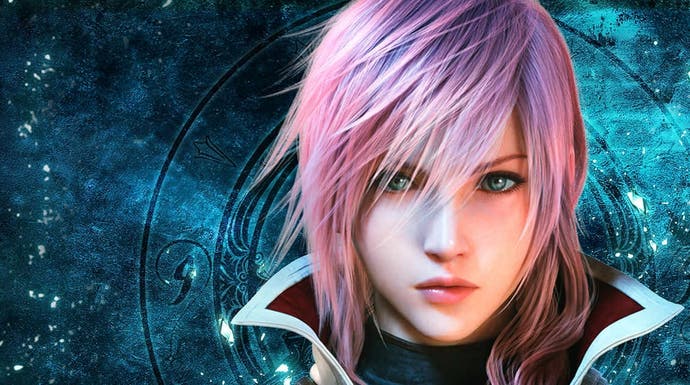Final Fantasy 13 on Xbox One X is a back-compat masterpiece
Enhanced performance, 9x resolution boost - and vastly improved video cutscenes.
The recent arrival of Final Fantasy 13 on Xbox One is a simply brilliant addition to the backwards compatible library. And for X owners at least, the transformation is astonishing: what was originally the least preferable version of the game is now by far and away the best way to play it. Better still, it also sees Microsoft going the extra mile to bring an enhanced experience to users, to the point where the line blurs significantly between backwards compatibility and a bespoke remastering effort.
First of all, let's tick off the basics. There's an established baseline with improvements to the X-enhanced back-compat line-up - specifically, a 3x resolution increase in both X and Y axis, for a 9x boost to pixel-count overall. Final Fantasy 13 originally ran at a somewhat disappointing 1024x576 on Xbox 360 with 2x MSAA, but Microsoft's vGPU delivers a vastly improved 3072x1728 native resolution on Xbox One X, retaining the same AA technique. For pseudo-sequels Final Fantasy 13-2 and Lightning Returns - also backwards compatible and X-enhanced - that increases from the original 720p to full native 4K, again with 2x MSAA.
What's important here isn't just the number of pixels but also the quality of Square Enix's original artwork. There are several X-enhanced titles out there where the resolution boost - although welcome - can also highlight the shortcomings of the original textures. However, the design choices and style of the art, combined with Microsoft's use of negative LOD bias to push higher quality mipmaps to the fore, ensures that what we get here is a viable, beautiful presentation for 4K screens. On top of that, 2D bitmaps - seen on the HUD - get upscaled via a nearest neighbour technique for crisp, non-blurry representations for lower quality assets. Higher resolution versions would be preferable of course, but this is the best way to handle those assets otherwise.
On top of that, there's also a performance increase. Despite the 9x resolution boost and the associated GPU load on X hardware, Final Fantasy 13 still delivers tangible improvements to frame-rate that clear up most of the issues found in the original game, powering past both the original Xbox 360 version and its PS3 counterpart. There are still noticeable drops from the target 30fps in the pseudo-sequels, but again, Xbox One X remains constant in delivering higher overall frame-rates than any other console version of the game - while operating at native 4K.
The enhancements do not stop there, however, and it's here where Microsoft breaks new ground. One of the key compromises of Final Fantasy 13 on Xbox 360 was the basic lack of storage compared to its PS3 counterpart, where the Blu-ray medium allowed Square-Enix to pack 33GB of video sequences onto the disc. Analysis of the file structure suggests that these were h.264 files in a Sony-specific container. Meanwhile, Xbox 360 used 576p Bink encodes with some truly lamentable quality. They didn't hold up on Xbox 360 and they'd look even more poor on a 4K display. Microsoft's solution? To supply completely new 720p versions of the video content.
There's a night and day improvement here, but this is the one area where the PlayStation 3 version retains an edge - image quality from the original Blu-ray game is still a notch above. Regardless, this is a hugely significant move for a number of reasons. Firstly, it shows Microsoft willing to go the extra mile in delivering the best experience. Secondly, it's not just Xbox One X owners that benefit here - the same revised assets are used on the standard Xbox One too, providing a big improvement for all users. And finally, it's the first time we're aware of where the platform holder has injected higher quality assets into an existing Xbox 360 game. If Microsoft's back-compat engineers can do this, how much further would they be willing to go - what if extant higher resolution PC textures could be injected into future X releases? This is potentially very exciting.
It's an enhancement that only seems to have been made for Final Fantasy 13 - the two other titles used real-time engine visuals to deliver the vast bulk of the cutscenes, but this did result in some of the most egregious slow-down and of course, Xbox One X improves matters significantly there already.
Of course, debate continues to surround the quality and nature of Final Fantasy 13 itself, specifically the linear path through the majority of the adventure. Much was made of the title's lack of open-ended exploration back in the day, but after a decade of game development where the open world has dominated, returning to Final Fantasy 13 is almost like a breath of fresh air. The game holds up really well, and after sinking in five hours of play, I had a great time.
The icing on the cake is the price. While Final Fantasy 13-2 and Lightning Returns are still rather pricey on the digital store (to the point where chasing down physical copies is probably the best way forward), FF13 itself is a steal for Xbox One X users at just £5.99 right now. That's exceptional value for a game that - on Xbox One X at least - delivers an experience that surpasses the quality of many remasters and uprezzed ports. Overall then, Microsoft deserves kudos here for a brilliant piece of fan service, and another wonderful release for Xbox One X.










